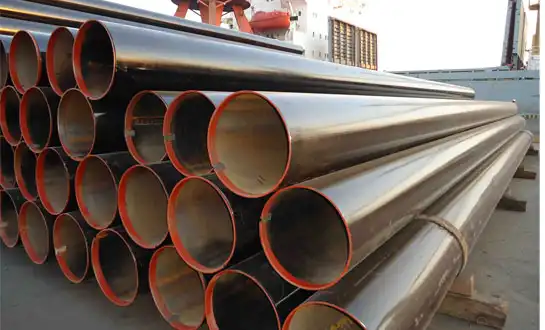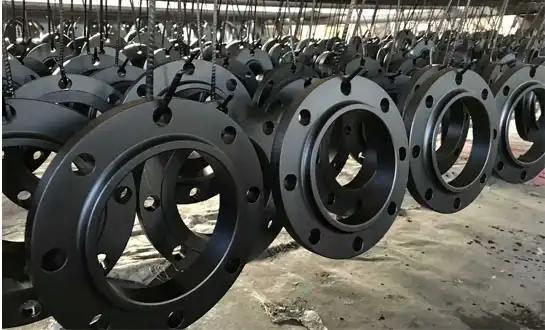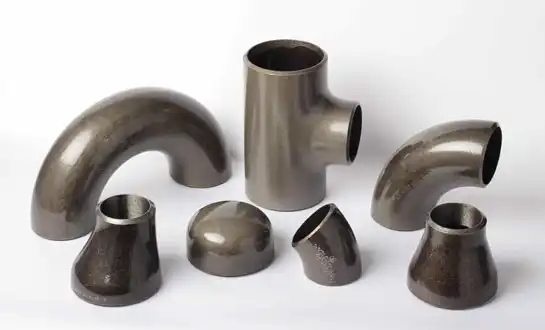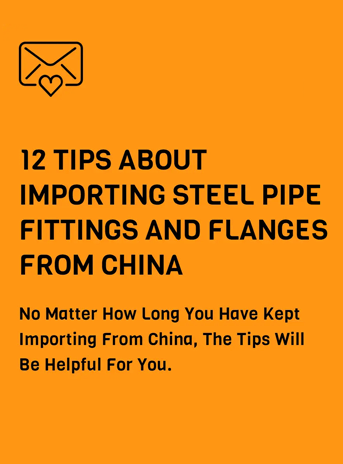The weldability of duplex steel pipe fittings requires careful attention to metallurgical principles, welding procedures, and quality verification to maintain their superior corrosion resistance and mechanical properties. Understanding heat input control, proper filler metal selection, and post-weld treatment requirements enables buyers to make informed procurement decisions and ensure successful installation outcomes. By working with an experienced duplex steel pipe fittings supplier who follows proven welding procedures, buyers can confidently specify duplex steel pipe fittings for demanding applications.
Weldability of Duplex Steel Pipe Fittings: A Practical Buyer’s Guide
For engineers and consumers seeking dependable, long-lasting pipeline solutions in harsh and corrosive environments, knowing the weldability properties of duplex steel pipe fittings is fundamental. A combination of austenitic and ferritic microstructures, duplex stainless steels are stronger and more corrosion resistant than regular stainless steels. But keeping the material's desirable qualities requires a solution to the unique welding issues caused by its unique metallurgical makeup. So that you may make educated purchasing decisions, this detailed guide looks at the important aspects that impact the weldability of duplex steel pipe fittings. It is crucial to carefully regulate the heat input, interpass temperature, and filler metal selection in order to preserve the balanced austenite-ferrite microstructure during welding operations in order to ensure that duplex steel pipe fittings can be weldable. Welding procedures that disrupt the phase equilibrium or encourage detrimental intermetallic precipitation can weaken the mechanical strength and corrosion resistance of duplex steel pipe fittings, which are otherwise very desirable. For duplex steel pipe fittings to function to their maximum capacity in harsh environments like desalination plants, offshore platforms, and chemical processing, it is necessary to know how to weld properly, what to prepare the pipe for welding, and what to treat the pipe after welding.
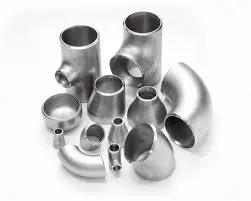
Essential Welding Considerations for Duplex Steel Pipe Fittings
Understanding Duplex Microstructure and Phase Balance
The fundamental characteristic that distinguishes duplex steel pipe fittings from other stainless steel grades is their dual-phase microstructure consisting of approximately equal proportions of austenite and ferrite. This balanced microstructure provides enhanced mechanical properties and superior resistance to stress corrosion cracking compared to purely austenitic grades. During welding, the thermal cycle causes the ferrite phase to transform partially to austenite upon cooling, but the cooling rate significantly influences the final phase balance. Rapid cooling can result in excess ferrite content, reducing toughness and corrosion resistance, while excessively slow cooling may promote formation of harmful intermetallic phases such as sigma phase and chi phase. The weldability of duplex steel pipe fittings therefore requires precise control of cooling rates to achieve the optimal 40-60% ferrite content in the weld metal and heat-affected zone. Buyers should verify that their fabricators understand these metallurgical considerations and employ welding procedures specifically qualified for duplex materials. The phase balance can be measured using magnetic methods or metallographic examination, providing quality assurance that welded duplex steel pipe fittings maintain their intended properties.
Heat Input Control and Temperature Management
When welding duplex steel pipe fittings, one of the most important things to keep in mind is how to properly manage the heat input. Grain growth and intermetallic precipitation are both negatively impacted by high heat input, which can also reduce mechanical characteristics and corrosion resistance in the heat-affected zone. Heat input for duplex steel pipe fittings is normally advised to be between 0.5 and 2.5 kJ/mm according to industry standards; however, certain grades may have stricter requirements. Equally crucial is the regulation of the interpass temperature; in general, this temperature range is kept below 150°C to avoid the formation of harmful phases during extended exposure. In order to keep the temperature restrictions intact during multi-pass welds on thicker duplex steel pipe fittings, welders must ensure that there is sufficient cooling time between each pass. To maintain constant control during the welding process, modern technology can monitor the heat input. To ensure that heat input and temperature monitoring systems are used, buyers should inquire about the welding techniques and equipment used by their suppliers.
Filler Metal Selection and Compatibility
Selecting appropriate filler metals is crucial for achieving sound welds in duplex steel pipe fittings that maintain the desired microstructure and properties. Filler metals for duplex steels are typically over-alloyed with nickel compared to the base material to compensate for preferential ferrite formation during solidification and cooling. Common filler metals such as AWS ER2209 for standard duplex grades and ER2594 for super duplex grades are specifically formulated to produce weld metal with balanced phase proportions and corrosion resistance matching or exceeding the base material. The filler metal must also be compatible with the welding process being used, whether gas tungsten arc welding, gas metal arc welding, or flux-cored arc welding. Buyers of duplex steel pipe fittings should verify that fabricators use certified filler metals with documented chemical composition that meets relevant standards. The use of incorrect filler metals represents one of the most common causes of weld failures in duplex steel pipe fittings, potentially resulting in reduced corrosion resistance or inadequate mechanical properties.
Pre-Weld Preparation and Joint Design Requirements
Surface Preparation and Cleanliness Standards
Achieving high-quality welds in duplex steel pipe fittings begins with thorough surface preparation that removes contaminants and ensures proper joint fit-up. The surfaces to be welded must be free from mill scale, rust, oil, grease, paint, and other foreign materials that could introduce defects or contamination into the weld metal. Mechanical cleaning methods such as grinding with dedicated stainless steel brushes or abrasive wheels are commonly employed, though care must be taken to avoid iron contamination from tools previously used on carbon steel. Chemical cleaning or pickling may be necessary for heavily oxidized surfaces, followed by neutralization and thorough rinsing. The high chromium content in duplex steel pipe fittings provides excellent corrosion resistance, but contamination during welding can compromise this property by preventing proper passive film formation. Joint edges should be inspected for damage, cracks, or laminations that could affect weld quality. Buyers should establish clear surface preparation requirements in their procurement specifications and verify that fabricators follow documented procedures.
Joint Design Optimization for Duplex Materials
The joint design for duplex steel pipe fittings must consider both the material's physical properties and the welding process requirements. Duplex steels have lower thermal conductivity than austenitic stainless steels, resulting in less heat dissipation during welding and potentially higher peak temperatures in the heat-affected zone. Joint designs should incorporate appropriate root openings, groove angles, and land dimensions that provide adequate access for welding while minimizing heat input requirements. For thicker wall duplex steel pipe fittings, compound bevel joint preparations may be necessary to ensure complete penetration and fusion while maintaining acceptable heat input levels. Joint fit-up tolerances are particularly important for duplex steel pipe fittings because gaps or misalignment increase the risk of incomplete fusion or excessive reinforcement requiring additional passes. Modern orbital welding systems can produce highly consistent joints with minimal heat input variation, making them particularly suitable for critical applications.
Pre-Heating Requirements and Practices
Unlike many carbon steels and some low-alloy steels, duplex steel pipe fittings generally do not require pre-heating before welding under normal conditions. In fact, pre-heating is typically avoided for duplex materials because it can extend the time spent in temperature ranges where harmful phases may form, potentially degrading properties. However, in extremely cold ambient conditions or when welding very thick sections, modest pre-heating to 50-100°C may be employed to prevent excessive cooling rates that could result in high ferrite content. Any pre-heating of duplex steel pipe fittings must be carefully controlled and documented to ensure it does not exceed levels that could promote intermetallic precipitation. For sub-zero ambient temperatures, protection from wind and precipitation may be more important than active pre-heating.
Post-Weld Treatment and Quality Verification
Post-Weld Heat Treatment Considerations
Post-weld heat treatment practices for duplex steel pipe fittings differ significantly from those used with other steel grades. Traditional stress-relief heat treatments commonly applied to carbon steel and low-alloy steel are generally not performed on duplex steel pipe fittings because the temperatures typically used (600-700°C) fall within the range where sigma phase and other detrimental intermetallic compounds precipitate. When post-weld heat treatment is necessary to restore corrosion resistance after welding, solution annealing at temperatures above 1000°C followed by rapid cooling may be employed, though this is often impractical for large fabricated assemblies. Most applications of duplex steel pipe fittings rely on proper welding procedures to achieve acceptable properties in the as-welded condition, eliminating the need for post-weld heat treatment. Buyers should clearly specify whether post-weld heat treatment is required and understand the implications for both cost and material properties.
Non-Destructive Examination Methods
In order to confirm that the welds in duplex steel pipe fittings are of good quality and to find any flaws that can affect performance, a thorough non-destructive inspection is required. The first step in the inspection process is a visual examination, which can reveal surface defects, undercuts, excessive reinforcing, or incomplete fusion. Testing duplex steel pipe fittings with liquid penetrant is an excellent way to find surface-breaking cracks or porosity. By identifying volumetric flaws like inclusions, porosity, or lack of fusion, radiographic or ultrasonic testing sheds light on the internal weld quality. Due to high ferritic composition, duplex steel pipe fittings have magnetic properties that make it possible to detect surface and near-surface faults with magnetic particle examination. The severity of the application and any applicable regulations or standards should inform the buyer of the necessary non-destructive testing procedures.
Corrosion Resistance Verification Testing
Verifying that welded duplex steel pipe fittings maintain adequate corrosion resistance is crucial for applications where this property is the primary reason for material selection. Ferrite content measurement using magnetic instruments provides a quick field check that the weld metal phase balance falls within acceptable ranges, typically 30-70% ferrite depending on the specific grade. More comprehensive assessment involves corrosion testing such as the ferric chloride test per ASTM G48, which evaluates resistance to pitting and crevice corrosion in the weld metal and heat-affected zone. Metallographic examination can directly observe the microstructure of welded duplex steel pipe fittings, confirming appropriate phase balance and absence of harmful intermetallic phases. Buyers should specify corrosion testing requirements appropriate to their service environment and understand that proper welding procedures are essential for maintaining the excellent corrosion resistance.
Conclusion
FAQ
1. Why is heat input control critical when welding duplex steel pipe fittings?
Excessive heat input during welding of duplex steel pipe fittings can promote formation of harmful intermetallic phases like sigma phase that reduce toughness and corrosion resistance. High heat input also extends the time spent in critical temperature ranges where these phases precipitate. Controlled heat input between 0.5-2.5 kJ/mm ensures proper cooling rates that maintain the balanced austenite-ferrite microstructure essential for optimal properties in duplex steel pipe fittings.
2. Can standard stainless steel filler metals be used with duplex steel pipe fittings?
Standard austenitic stainless steel filler metals are not recommended for duplex steel pipe fittings because they lack the proper nickel enrichment needed to achieve balanced phase proportions in the weld metal. Specialized duplex filler metals like ER2209 or ER2594 are formulated to compensate for preferential ferrite formation during solidification, producing weld metal that matches the corrosion resistance and mechanical properties of duplex steel pipe fittings.
3. Do duplex steel pipe fittings require post-weld heat treatment?
Most duplex steel pipe fittings do not require post-weld heat treatment and are used in the as-welded condition. Traditional stress-relief temperatures used for carbon steels would actually harm duplex materials by promoting intermetallic precipitation. When heat treatment is necessary, solution annealing above 1000°C followed by rapid cooling may be employed, though this is impractical for most fabricated assemblies.
4. How can buyers verify proper welding procedures for duplex steel pipe fittings?
Buyers should request welding procedure specifications that have been qualified specifically for duplex materials through procedure qualification records. These documents should demonstrate proper heat input ranges, interpass temperatures, and filler metal selection. Additionally, buyers can require ferrite content measurement, corrosion testing per ASTM G48, or metallographic examination of production welds to verify that duplex steel pipe fittings maintain their intended microstructure and properties.
HEBEI RAYOUNG PIPELINE: Your Trusted Duplex Steel Pipe Fittings Manufacturer
At HEBEI RAYOUNG PIPELINE TECHNOLOGY CO., LTD., we believe that excellent infrastructure starts with dependable materials and expert technical support. As one of the leading pipes and fittings manufacturers with ISO 9001:2015, GOST-R, and SGS certifications, we supply high-quality duplex steel pipe fittings that stand the test of time in the most demanding environments. Our comprehensive product range includes buttweld steel elbows, reducers, and flanges manufactured to strict dimensional and metallurgical specifications. As a dependable carbon steel pipe supplier serving domestic and global markets, we understand the importance of consistent quality and innovation in every application. Our technical team provides expert guidance on welding procedures, material selection, and installation practices to ensure your duplex steel pipe fittings deliver optimal performance throughout their service life. We maintain rigorous quality control throughout production and supply complete material traceability documentation for every order. Partner with RAYOUNG for duplex steel pipe fittings that combine superior corrosion resistance with exceptional weldability. Contact our engineering team today at info@hb-steel.com to discuss your specific requirements.
References
1. American Welding Society. "Welding of Duplex Stainless Steels: Specification and Procedure Guidelines." AWS Technical Publication, 2024.
2. International Molybdenum Association. "Practical Guidelines for Fabrication of Duplex Stainless Steels." IMOA Reference Book Series, 2023.
3. American Society of Mechanical Engineers. "Welding and Brazing Qualifications for Duplex and Super Duplex Stainless Steels." ASME Boiler and Pressure Vessel Code Section IX, 2024.
4. Welding Institute. "Best Practice Guidelines for Welding Duplex Stainless Steel Pipe Systems." TWI Industrial Members Report, 2023.
5. ASTM International. "Standard Practices for Detecting Detrimental Intermetallic Phase in Duplex Austenitic/Ferritic Stainless Steels." ASTM Standards Publication, 2024.
6. European Stainless Steel Development Association. "Welding Duplex Stainless Steels: A Comprehensive Technical Guide." Euro Inox Materials and Applications Series, 2023.

Need a quote? Want to see samples? Just say hello. We’re friendly. We’re fast. And we’re ready when you are.
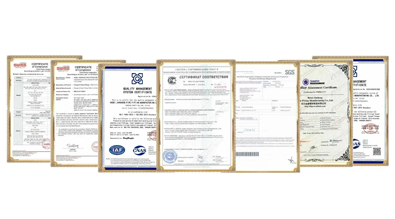
Welcome to RAYOUNG – Strong Pipes, Stronger Promise
